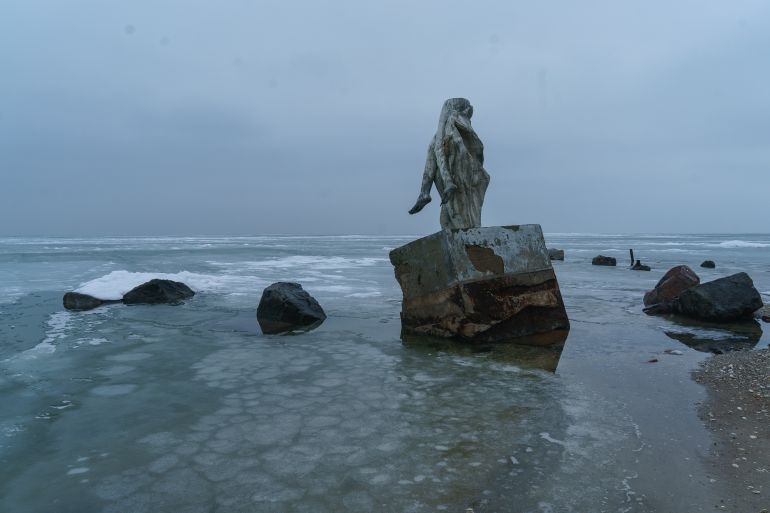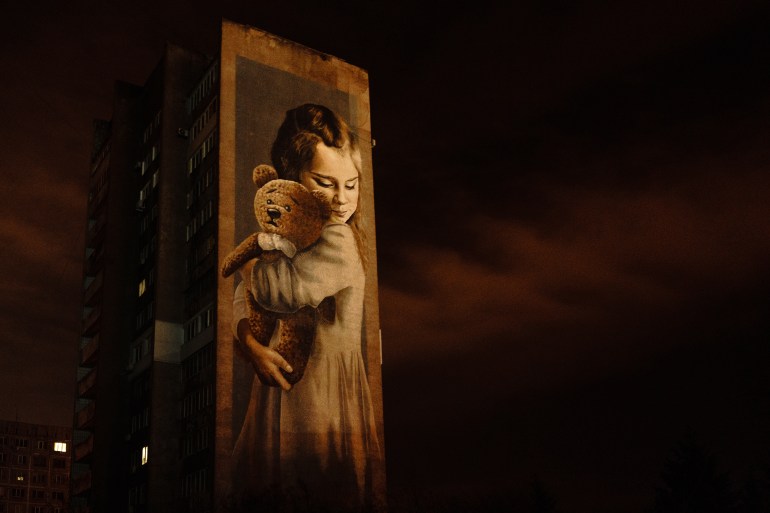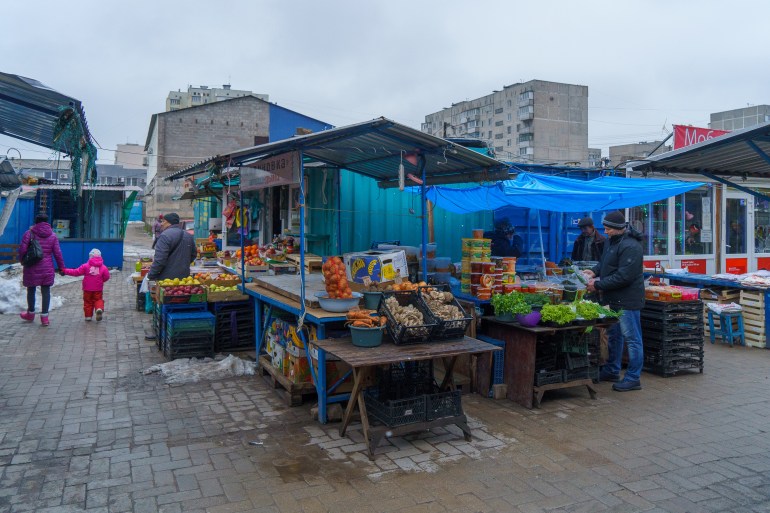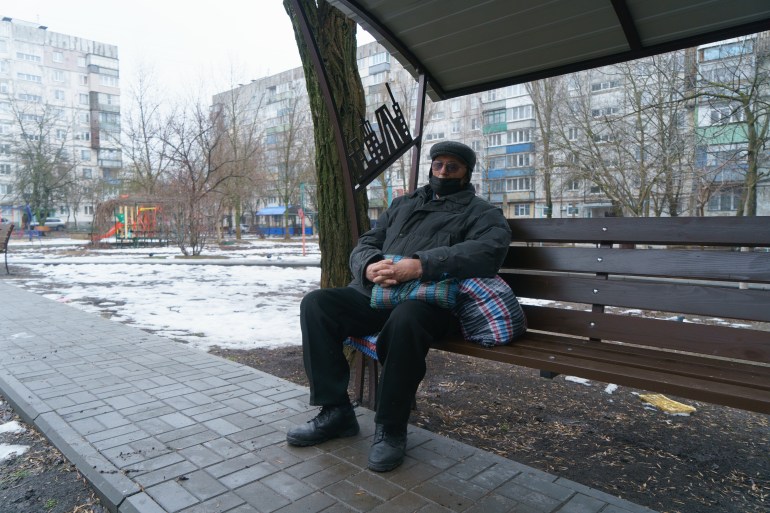Mariupol: War fears in Ukraine’s vulnerable frontier city
Mariupol, home to 500,000 people, was briefly captured by Russia-backed separatists in 2014 and has suffered significant violence.

Mariupol, Ukraine – Seven years ago, in January 2015, shells began hitting Liudmyla Skoroboatyh’s residential block on the outskirts of Mariupol, eastern Ukraine’s largest front-line city.
She saw her neighbour at a window drinking coffee. The windows soon came in, and the flying glass damaged her body so badly that an ambulance refused to take her to hospital, saying her case was hopeless.
Keep reading
list of 3 itemsGermany’s Scholz to reassure US over Ukraine in first Biden meet
Life in a destroyed village on the front line in eastern Ukraine
Another neighbour tried to drive her there, but she died on the way from her injuries.
The victim’s daughter, Anechka, only three at the time, was saved by the teddy bear she had been cuddling.
“That’s how her daughter was left alone,” Skoroboatyh, 69, a former human-resources manager, told Al Jazeera.
“There shouldn’t be more three-year-old girls who lose their mothers. Any peace is better than such a war.”
As the threat of escalation with Russia looms and tens of thousands of troops build up on Ukraine’s borders, few places in Ukraine are more precariously situated than Mariupol – which was briefly captured by separatists in 2014.
A port city, it is vulnerable from three sides – to the south, the Sea of Azov, where Russian naval ships patrol, and the land to the east and north is controlled by Russian-backed separatists.
While the West believes an attack on the country is “imminent”, no one yet knows what shape it will take – even Russia’s President Vladamir Putin, it is thought.
Among the most likely possible targets, according to experts, is Mariupol, which has a population of 500,000 and sits in a highly strategic position. If captured, Moscow would be able to create a land corridor between Russia, the separatist territories, and annexed Crimea.

Home to some of the biggest factories in Europe, a sign of prosperity in Soviet times, Mariupol today suffers high crime rates, a struggling economy and lower living standards than other parts of Ukraine.
Once-wealthy tourist resorts nearby lie in ruins. In the village of Sopyne, a merry-go-round rusts as the uncertainty of war has rendered holiday homes and children’s camps unusable.
For Mariupol’s residents, who have endured eight years of living within a few kilometres of the front line, even discussing the possibility of renewed fighting brings back painful memories.
After the violent chaos of 2014 and the early days of the Russia-Ukraine conflict, which has killed more than 14,000 people, Mariupol saw one of the worst single attacks of the war.
In 2015, missiles hit residential blocks in the Vostochnyi district – or Shidnyi in Ukrainian – killing at least 30 civilians.
The scars are still visible – on the metal cladding covering a row of shops, plastic stars hide the shrapnel holes.
The shattered windows of apartments are kept in place with crisscrossed lines of tape.
A mural of Milana, who lost her family and leg in the rocket attack when she was six, looms over the city centre from one of the tallest buildings to remind residents of what is at stake.

“Russia is not welcome here,” said fruit and vegetable store owner Olena Kohda, 49, in Kyivskiy market, close to where the 2015 rocket attack hit.
Sellers say the market was also damaged that day, and the pathways were strewn with debris, blood and corpses.
“I have many relatives in Russia and people there don’t like Putin either. My husband fought in Afghanistan, so he is also familiar with weapons. We are not giving our Ukraine to anyone,” she said.
Not everyone agrees.
Some locals in the market shared the mixed opinions of a region divided between two worlds – eastern Ukraine is predominantly Russian-speaking and many here have ancestral ties to modern-day Russia.
Some believe they have been abandoned by the central government in Kyiv.
“If the Russian invasion happens no one will put up a fight – if you want to take it, take it. I don’t think civilians will stop them, just do it peacefully,” said a store owner, who did not want to be named.
For Volodymyr Guzhviy, 77, a former refractory worker who also lives in the residential blocks that were hit in 2015, it is the future of his seven grandchildren and two great-grandchildren that worries him most.
“This new war won’t be the same as in 2014. If there is bombing again, everything here will be destroyed completely this time,” he said.
“Putin doesn’t reckon with anyone, he thinks he is the god. He killed so many children already. If a new war begins – how can he live with that?”
